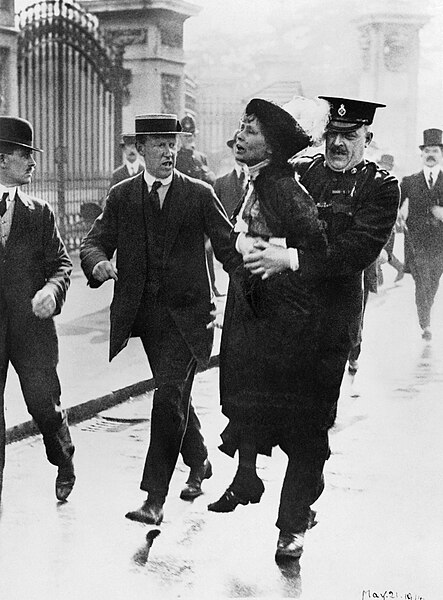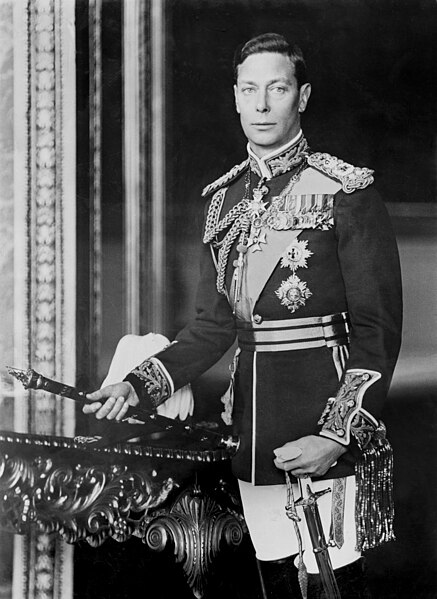This article navigates through notable historical events that occurred on February 15th, highlighting their significance across various domains.
It offers a journey from ancient philosophical debates to significant modern-day occurrences, reflecting on the impacts these milestones have had on global history.
Through examining events such as political shifts, scientific achievements, and cultural milestones, readers gain insight into the complex layers of human progress and the profound influences these events continue to exert on the world.
February 15th Events in History
590 – Khosrau II is crowned king of Persia
Khosrau II, also known as Khosrau Parviz, was crowned as the king of the Sasanian Empire, one of the most powerful states of the ancient world, rivaling the Roman-Byzantine Empire.
His reign was marked by initial success and expansion but eventually led to turmoil and conflict within the empire and with external forces.
The significance of Khosrau II’s coronation lies not only in his dramatic and eventful rule but also in the cultural and artistic flourishing that occurred during his time, despite the political instability.
1764 – The city of St. Louis is established in Spanish Louisiana (now in Missouri, USA)
The city of St. Louis was established by French fur traders Pierre Laclède and Auguste Chouteau. It started as a trading post on the west banks of the Mississippi River and was named after Louis IX of France.
Also Read: February 14 – On this Day in History
Its strategic location near the confluence of the Mississippi and Missouri Rivers contributed to its growth as a major port city. St. Louis played a significant role in the westward expansion of the United States and has a rich cultural heritage, reflecting a blend of Native American, French, Spanish, and American influences.

1798 – The Roman Republic is proclaimed after Louis-Alexandre Berthier, a general of Napoleon, invades Rome, establishing a republic
Following the invasion of Rome by French forces led by General Louis-Alexandre Berthier, the Roman Republic was proclaimed, signaling the end of the Papal States’ temporal power for a brief period.
This event was part of the wider series of revolutionary upheavals throughout Europe, inspired by the ideals of the French Revolution.
Also Read: February 16th Events in History
The proclamation of the Republic represented a significant challenge to the traditional monarchical and religious order of Europe and was a bold experiment in republican governance, although it was ultimately short-lived due to the complexities of the era’s geopolitics.
1835 – The first constitutional law in modern Serbia is adopted
The first constitutional law in modern Serbia, often referred to as the Sretenje Constitution, was adopted. This constitution was inspired by the Belgian Constitution of 1831 and marked a significant step in Serbia’s development as a sovereign state.
It introduced modern legal principles such as the separation of powers, civil rights, and the rule of law into Serbian governance.
Although it was suspended by the Ottoman Empire, which had suzerainty over Serbia at the time, the Sretenje Constitution is celebrated for laying the foundational principles of modern Serbian statehood and governance.
1879 – Women’s suffrage: Women in the U.S. state of Montana are granted the right to vote
The struggle for women’s suffrage in the United States saw significant milestones and variations at the state level before achieving national recognition with the 19th Amendment in 1920.
In 1879, Montana took a progressive step by granting women the right to vote, showcasing the patchwork progress of women’s suffrage across the country.
This move was part of a broader wave of suffrage movements that gained momentum in the late 19th and early 20th centuries, aiming to address and rectify the civic and legal inequalities faced by women.

1898 – The U.S. battleship USS Maine explodes and sinks in Havana Harbor, Cuba, contributing to the outbreak of the Spanish-American War
The explosion of the USS Maine in Havana Harbor was a pivotal event that escalated tensions between the United States and Spain, ultimately leading to the Spanish-American War. The Maine had been sent to Havana to protect American interests during the Cuban revolt against Spain.
The cause of the explosion that sank the ship, killing 260 of the 355 crew members, was never conclusively determined, but it was widely attributed to Spanish sabotage at the time. This incident fueled American expansionism and the rise of yellow journalism, contributing to the public’s support for war against Spain.
1906 – The British Labour Party is organized
The British Labour Party was officially organized in 1906, emerging from a coalition of trade unions and socialist groups that had been growing in influence since the late 19th century.
Its foundation was driven by the desire to give a political voice to the working class, a demographic that had gained increased political awareness and was seeking representation to address economic disparities, working conditions, and social injustices.
The Labour Party’s establishment marked a significant shift in British politics, introducing a party that would become one of the country’s two major political forces, advocating for social democracy and the welfare state.
1918 – The first Tarzan film, “Tarzan of the Apes,” is released
“Tarzan of the Apes,” released in 1918, was the first film adaptation of Edgar Rice Burroughs’ novel of the same name. The film was a silent movie that brought the story of Tarzan, the child raised by apes in the African jungle, to the silver screen.
This adaptation paved the way for numerous other films, TV shows, and media representations of the Tarzan story, making the character a cultural icon. The success of the film highlighted the public’s appetite for adventure stories and the potential of cinema as a storytelling medium.
1933 – In Miami, Giuseppe Zangara attempts to assassinate President-elect Franklin D. Roosevelt, but kills Chicago Mayor Anton Cermak instead
On February 15, 1933, Giuseppe Zangara attempted to assassinate President-elect Franklin D. Roosevelt in Miami, Florida, just weeks before Roosevelt’s inauguration. Zangara fired several shots, missing Roosevelt but hitting Chicago Mayor Anton Cermak and several others.
Cermak later died of his wounds. Zangara’s motives were rooted in his personal grievances and disillusionment with politicians, whom he blamed for his hardships. This failed assassination attempt underscored the political tensions and economic hardships of the era, as the United States grappled with the Great Depression.
Roosevelt’s survival allowed him to implement the New Deal, a series of programs, public work projects, financial reforms, and regulations, which significantly impacted American society and the economy.
1942 – Singapore surrenders to Japanese forces during World War II
The fall of Singapore to Japanese forces during World War II on February 15, 1942, marked a significant and shocking defeat for the British Empire.
Known as the “Gibraltar of the East” for its supposed impregnability, Singapore’s surrender was a result of a swift and brutal campaign through the Malay Peninsula, where Japanese troops outmaneuvered Allied forces.
The capture of Singapore resulted in the largest surrender of British-led military personnel in history, with around 80,000 soldiers becoming prisoners of war. This event significantly altered the balance of power in Southeast Asia and is remembered for the subsequent harsh treatment of POWs and civilians under Japanese occupation.
1944 – World War II: The assault on Monte Cassino, Italy begins
The Battle of Monte Cassino, part of the Italian Campaign of World War II, was a series of four assaults by the Allies against the Winter Line in Italy held by Axis forces. The objective was to break through to Rome.
The monastery atop Monte Cassino was a historic site, founded in the 6th century. It was believed to be used by the Germans as a defensive position, though this was controversial. The Allied forces faced fierce resistance and difficult terrain, leading to high casualties.
The monastery was eventually destroyed by air bombardments. The battle is remembered for the intense fighting and the controversial decision to bomb the monastery, which ultimately did not significantly impede German defensive capabilities.

1952 – King George VI of the United Kingdom is buried in St. George’s Chapel, Windsor Castle
King George VI of the United Kingdom, who had ascended to the throne unexpectedly following his brother Edward VIII’s abdication, died on February 6, 1952, and was buried on February 15, 1952, in St. George’s Chapel at Windsor Castle. His reign included the tumultuous times of World War II, during which he became a symbol of British resilience and determination.
His death marked the beginning of the reign of his daughter, Queen Elizabeth II. The transition highlighted the end of an era and the beginning of a new chapter in British history, with Elizabeth II becoming the longest-reigning current monarch.
1961 – The entire United States figure skating team is killed in an airplane crash in Belgium
On February 15, 1961, Sabena Flight 548, carrying the entire United States figure skating team to the World Championships in Prague, Czechoslovakia, crashed near Brussels, Belgium, killing all 72 passengers and crew aboard. The team included 18 athletes, coaches, family members, and judges.
This tragedy deeply affected the figure skating community worldwide and led to the cancellation of the 1961 World Championships. It was a significant loss for the sport in the United States, taking years to recover from the impact of losing so many talented skaters and coaches in one tragic event.
1965 – Canada adopts the red and white maple leaf flag
On February 15, 1965, Canada officially adopted the red and white maple leaf flag, replacing the Union Jack. This new flag was a significant symbol of Canada’s identity, distinct from its colonial past.
The flag features a stylized 11-point maple leaf in the center, representing an emblematic and unifying symbol of Canada, recognizable around the world.
The adoption of the maple leaf flag was part of a broader movement toward Canadian sovereignty and national pride, marking a step away from British symbols toward ones distinctly Canadian, reflecting the country’s natural beauty and cultural heritage.
1971 – The decimalisation of British coinage is completed on Decimal Day
The United Kingdom completed its transition to decimal currency on February 15, 1971, a process commonly referred to as Decimal Day. Prior to this change, British currency was based on a system of pounds, shillings, and pence, where there were 20 shillings in a pound and 12 pence in a shilling.
The move to a decimal system simplified this to 100 new pence in a pound, aligning the UK with the currency systems used by most other countries and facilitating easier trade and economic calculations.
The change required extensive planning, public education campaigns, and the introduction of new coins. Decimalisation represented a significant shift in British economic life, modernizing its currency system and marking the end of a centuries-old method of monetary calculation.
1989 – The Soviet Union announces that all of its troops have left Afghanistan
On February 15, 1989, the Soviet Union announced the withdrawal of its troops from Afghanistan, marking the end of a controversial and costly nine-year conflict.
The Soviet invasion of Afghanistan in 1979 had been intended to support the communist government there against insurgent groups, but it quickly escalated into a protracted military engagement, drawing comparisons to the United States’ experience in Vietnam.
The withdrawal followed the signing of the Geneva Accords in 1988, which laid the groundwork for the Soviet exit as part of a broader move towards de-escalation of Cold War tensions. The departure of Soviet forces did not bring peace to Afghanistan, however, as the country descended into civil war, setting the stage for future conflicts, including the rise of the Taliban.
1991 – The Visegrád Agreement, establishing cooperation to move toward free-market systems, is signed by the leaders of Czechoslovakia, Hungary, and Poland
Signed by the leaders of Czechoslovakia, Hungary, and Poland on February 15, 1991, the Visegrád Agreement was aimed at fostering mutual cooperation to accelerate each country’s transition from a command to a market economy, to promote democratization, and to achieve European integration.
The agreement was named after the Hungarian town of Visegrád, where the meeting took place. This pact was significant because it represented a collaborative effort among former Eastern Bloc countries to overcome the legacy of communism and work towards integration into European political, economic, and security structures.
The Visegrád Group (V4) has since played a role in facilitating the European integration of its member states, though its influence and the coherence of the group’s objectives have varied over time.
2003 – Protests against the Iraq war occur in over 600 cities worldwide, including a rally of over one million people in London
On February 15, 2003, millions of people around the world participated in protests against the impending Iraq War, making it one of the largest coordinated global protest events in history. Demonstrations took place in over 600 cities, with notable gatherings in London, Rome, Madrid, and New York City.
The protests were aimed at opposing the United States’ and its allies’ plans to invade Iraq under the pretext that the Iraqi government, led by Saddam Hussein, possessed weapons of mass destruction—a claim that was later discredited.
Despite the massive public outcry, the coalition forces invaded Iraq in March 2003, leading to a conflict that would have lasting impacts on regional stability, U.S. foreign policy, and global attitudes towards interventionism.
2013 – A meteor explodes over the Russian city of Chelyabinsk, injuring 1,491 people and damaging over 4,300 buildings
On this day, a meteor about 20 meters in diameter entered the Earth’s atmosphere over the Russian city of Chelyabinsk, exploding in an air burst approximately 18.5 miles above the ground.
The explosion released energy equivalent to nearly 500 kilotons of TNT, causing over 1,491 injuries, mostly from glass shattered by the shockwave. The event highlighted the potential danger posed by near-Earth objects (NEOs) and underscored the importance of monitoring and developing contingency plans for protecting Earth from potential impacts.
It also sparked increased public and scientific interest in asteroid detection and defense strategies, leading to greater investment in space observation technologies.
